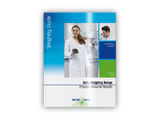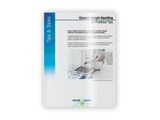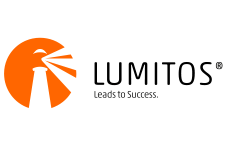To use all functions of this page, please activate cookies in your browser.
my.chemeurope.com
With an accout for my.chemeurope.com you can always see everything at a glance – and you can configure your own website and individual newsletter.
- My watch list
- My saved searches
- My saved topics
- My newsletter
HLA-A3
HLA-A3 (A3) is an HLA-A serotype. The serotype identifies the more common HLA-A*03 gene products. A3 is more common in Northwestern and Central Europe, Central Asia, India and Arabia. It is less common on the West Pacific Rim, Africa or indigenous populations of the New World. Additional recommended knowledge
Serotype
A3 is primarily composed of A*0301 and *0302 which serotype well with anti-A3 antibodies. There are 26 non-synonymous variants of A*03, 4 nulls, and 22 protein variants. Disease AssociationsBy serotypeA3 serotype is a secondary risk factor for myasthenia gravis,[2] lower CD8+ levels in hemochromatosis patients[3][4] By alleleA*0301 modulates increased risk for Multiple Sclerosis[5] A3-B Haplotypes
A3-B8 (Romania, svanS) A3-B35 (Bulgaria, Croatia, E. Black Sea) A3-B55 (E. Black Sea) A3-Cw7-B7A3-B7 is bimodal in frequency in Europe with one node in Ireland and the other in Switzerland, relatively speaking Switzerland appears to be higher. A3-Cw7-B7 is one of the most common multigene haplotypes in the western world, particularly in Central and Eastern Europe. A*0301 : C*0702 : B*0702 : DRB1*1501 : DQA1*0102 : DQB1*0602 References
|
|||||||||||||||||||||||||||||||||||||||||||||||||||||||||||||||||||||||||||||||||||||||||||||||
| This article is licensed under the GNU Free Documentation License. It uses material from the Wikipedia article "HLA-A3". A list of authors is available in Wikipedia. | |||||||||||||||||||||||||||||||||||||||||||||||||||||||||||||||||||||||||||||||||||||||||||||||
- Proteasome_inhibitor
- Molecular Assistance: Molecule layer aids chemoselective hydrogenation on solid palladium catalysts - How to obtain a palladium catalyst for the selective hydrogenation of acrolein
- Evonik invests in methionine production
- Tiny spiders, big color
- Lights on for silicon photonics - The demonstration of electroluminescence at terahertz frequencies from a silicon-germanium device marks a key step towards the long-sought goal of a silicon-based laser






